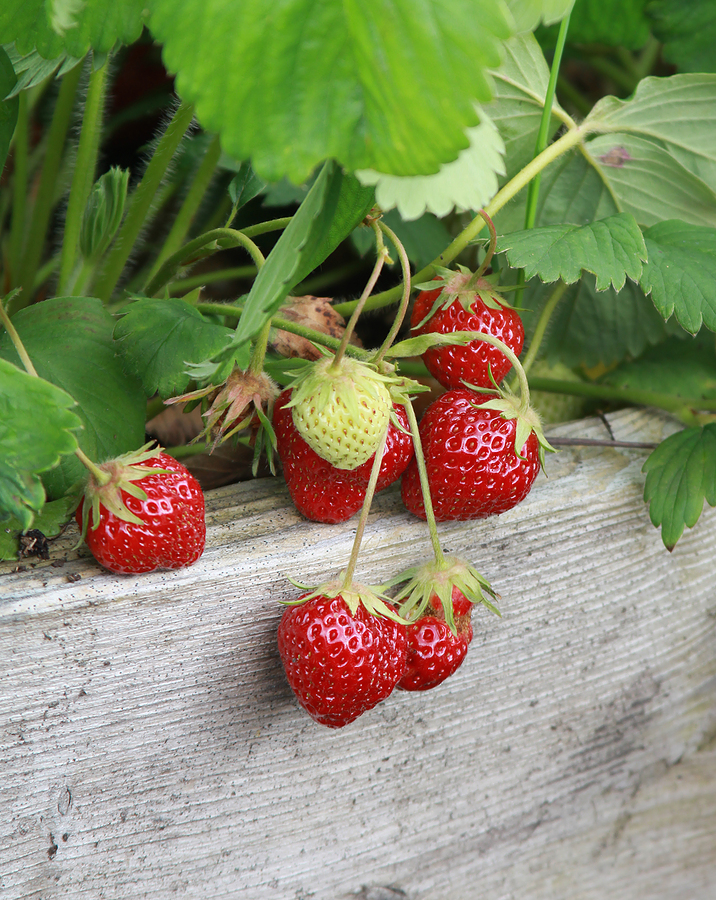Growing strawberries in containers has become one of my favorite ways to enjoy fresh fruit without sacrificing garden space. Whether you’re working with a small patio, balcony, or just want a low-maintenance setup, container gardening is both efficient and rewarding. After a few seasons of experimenting, here’s what I’ve learned and recommend to make the most of your container strawberry harvest.
Choosing the Right Container
Strawberries thrive in containers—as long as the container is at least 12 inches (30 cm) deep and equally wide per plant. The key is giving the roots enough space to grow strong and healthy. I’ve had success using a variety of containers, from terracotta and clay pots (great for breathability and natural aesthetics) to plastic pots, which are lightweight, durable, and excellent at retaining moisture. Grow bags are a flexible option too, especially if you like to rearrange your garden, though they do require more frequent watering.

Selecting Strawberry Varieties for Containers
Not all strawberries are equally suited for containers. Through trial and error, I’ve found that compact varieties with fewer runners work best. Day-neutral and Alpine strawberries are ideal—they produce consistent, small crops throughout the season. I also recommend everbearing varieties like Albion, Quinault, and Seascape for their manageable size and repeat fruiting.
If you’re up for a bigger harvest, June-bearing strawberries—like Earliglow, Jewel, or Tillamook—deliver one large crop in early summer. Just make sure to pick a variety that suits your local climate and your planting calendar.
Potting Mix and Soil Preparation
A high-quality, commercial potting mix is essential. I always blend in a bit of aged compost or coconut coir to help retain moisture and boost nutrients. Avoid garden soil, which is too dense and can cause drainage issues.
Watering and Feeding
Consistent moisture is key. I check my containers daily during hot weather to ensure the soil doesn’t dry out. Once flowering starts, I feed my plants weekly with a diluted fish emulsion—a tip I picked up from a seasoned gardener that’s made a noticeable difference in fruit production.
Sunlight and Placement
Strawberries love the sun. Aim for 6 to 8 hours of direct sunlight each day. One of the benefits of containers is mobility—move them around to chase the sun if needed. I also raise containers off the ground to improve drainage and keep pests like slugs and snails at bay.
Winter Care and Plant Longevity
One of the biggest perks of container growing? You can bring your plants indoors for winter. With enough light and a cool environment, I’ve been able to extend my harvest beyond the typical outdoor season.
That said, strawberry plants don’t last forever. For best results, replace your plants every two to three years to maintain healthy yields.
🍓 Strawberry Container Care Calendar
| Month | Tasks |
|---|---|
| January | If overwintering indoors, ensure cool temps and good light. Minimal watering. |
| February | Begin checking for new growth. Start planning for outdoor placement. |
| March | Repot or refresh soil if needed. Begin feeding with fish emulsion. |
| April | Move containers outside if frost risk is gone. Ensure full sun exposure. |
| May | Flowers begin—start weekly feeding. Water consistently. Watch for pests. |
| June | Peak fruiting! Harvest regularly. Continue feeding and watering. |
| July | Deadhead old flowers. Thin out runners if needed. Keep soil moist. |
| August | Continue feeding. Trim older leaves. Keep pests at bay. |
| September | Final harvests for everbearers. Prepare for seasonal slowdown. |
| October | Clean up plants. Reduce feeding. Consider moving indoors in cold zones. |
| November | Move containers to sheltered spot or indoors. Light watering only. |
| December | Let plants rest. Monitor indoor conditions (light, moisture). |
Related Posts:
🌱 Getting Started with Strawberries
- How to Grow Strawberries: A Complete Guide From My Garden to Yours
- Strawberry Planting Calendar: What to Plant and When
- How to Plant and Grow Strawberries
- How to Plant Strawberries: Step-by-Step
- Indoor Strawberry Starts: How and When to Begin
- Best Climate and Site for Growing Strawberries
🍓 Choosing Strawberry Varieties
- Strawberries: June-bearing vs Ever-bearing vs Day-neutral Varieties — What’s Best for Your Garden
- Strawberry Varieties by Region: The Best Picks for U.S. Gardeners
- June-Bearing Strawberry Varieties: A Complete Growing Guide
- Guide to Alpine Strawberries: Tiny but Tasty
- Growing Strawberries in Hot Summer Regions Including Best Varieties
🪴 Growing Techniques & Care
- Watering, Feeding, and Caring for Strawberries the Right Way
- Container Growing Strawberries: Space Saving Tips
- Propagating Strawberries from Runners
- Strawberry Problems Solved: Common Pests and Diseases—and How I Handle Them
🌞🌨️ Growing by Climate & Season
- Growing Strawberries Year-Round in Warm Climates: A Gardener’s Guide
- Fall and Winter Strawberry Care: Cold Climate Tips for Healthy Spring Growth
- Planning a Year-Round Strawberry Harvest
🍽️ Harvest & Enjoy
- Harvesting and Storing Strawberries: Tips for Freshness
- Strawberry Serving Ideas for a Delicious Table



